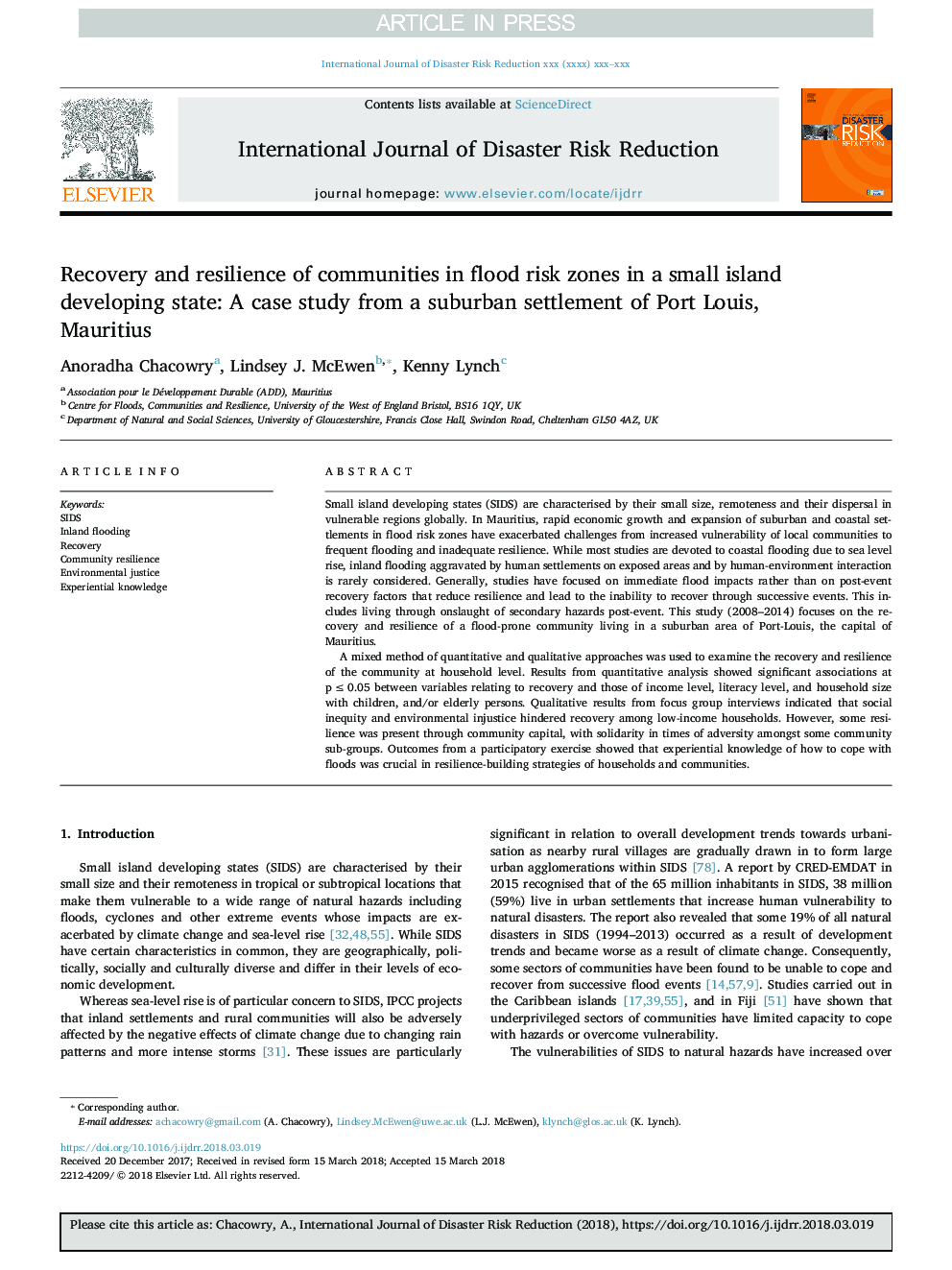| Article ID | Journal | Published Year | Pages | File Type |
|---|---|---|---|---|
| 7471856 | International Journal of Disaster Risk Reduction | 2018 | 13 Pages |
Abstract
A mixed method of quantitative and qualitative approaches was used to examine the recovery and resilience of the community at household level. Results from quantitative analysis showed significant associations at pâ¯â¤â¯0.05 between variables relating to recovery and those of income level, literacy level, and household size with children, and/or elderly persons. Qualitative results from focus group interviews indicated that social inequity and environmental injustice hindered recovery among low-income households. However, some resilience was present through community capital, with solidarity in times of adversity amongst some community sub-groups. Outcomes from a participatory exercise showed that experiential knowledge of how to cope with floods was crucial in resilience-building strategies of households and communities.
Related Topics
Physical Sciences and Engineering
Earth and Planetary Sciences
Geophysics
Authors
Anoradha Chacowry, Lindsey J. McEwen, Kenny Lynch,
